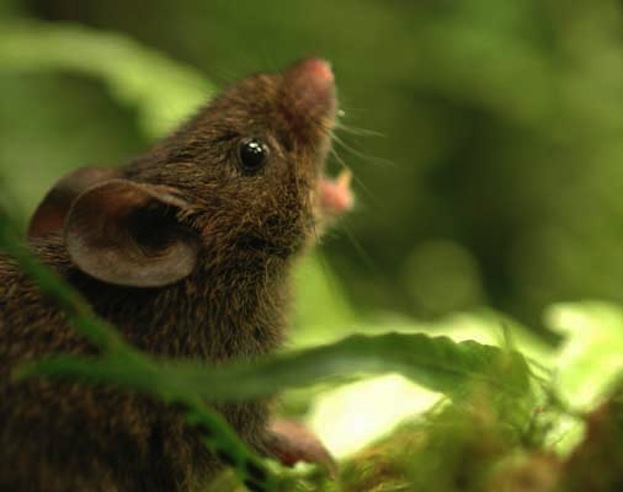To Avoid Fights, Mice Sing to the Clouds

Deep in the cloud forests of Central America, two species of singing mice put on a high-pitched opera to mark their territory and stave off clashes, researchers discovered.
Alston's singing mouse (Scotinomys teguina) and the Chiriqui singing mouse (S. xerampelinus) have overlapping lifestyles in the cloud forests of Costa Rica and Panama. But the tawny cousins seem to establish geographic boundaries so they can avoid competing with each other.
"A long-standing question in biology is why some animals are found in particular places and not others," study researcher Bret Pasch, a postdoctoral fellow at the the University of Texas at Austin, said in a statement. "What factors govern the distribution of species across space?"
As it turns out, a little communication between individuals affects the spread of both species as a whole.
Both species of singing mice produce vocalizations that are barely audible to humans. As video footage of the mouse-y opera from the foggy forest floor shows, the creatures throw their heads back and belt out songs in the form of rapidly repeated notes, known as trills. The Alston's mouse in the clip even looks likes it's taking a bow after its solo. [Watch Video of Singing Mouse]
Researchers already knew that the rodents sing to attract mates and repel rivals within their own species. But Pasch and colleagues found that these high-pitched tunes can serve as signals across species, too, helping males protect their turf.
Through experiments in the field and in the lab, the researchers noticed that the larger Chiriqui mice are less tolerant of heat. The creatures are typically spread throughout the cooler, higher-altitude parts of the cloud forests, and dominant Chiriqui males sing in response to potential intruders of both species, the researchers found.
Sign up for the Live Science daily newsletter now
Get the world’s most fascinating discoveries delivered straight to your inbox.
Meanwhile, Alston's mice are more flexible when it comes to temperature; they will spread into cooler, higher habitats if no Chiriqui mice are around to push them out. But when an Alston's male hears the song of its larger cousin, it will stop its own singing and flee to avoid confrontation, the researchers found.
"The use of communication in mediating species limits is the major finding of our study and provides insight into how large-scale patterns are generated by individual interactions," Pasch explained in a statement.
The research was published online this month in The American Naturalist.
Follow Megan Gannon on Twitter and Google+. Follow us @livescience, Facebook & Google+. Original article on LiveScience.










